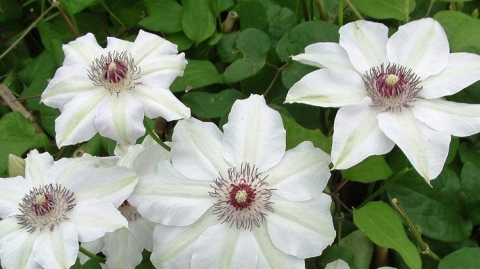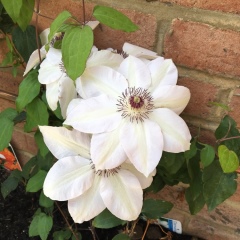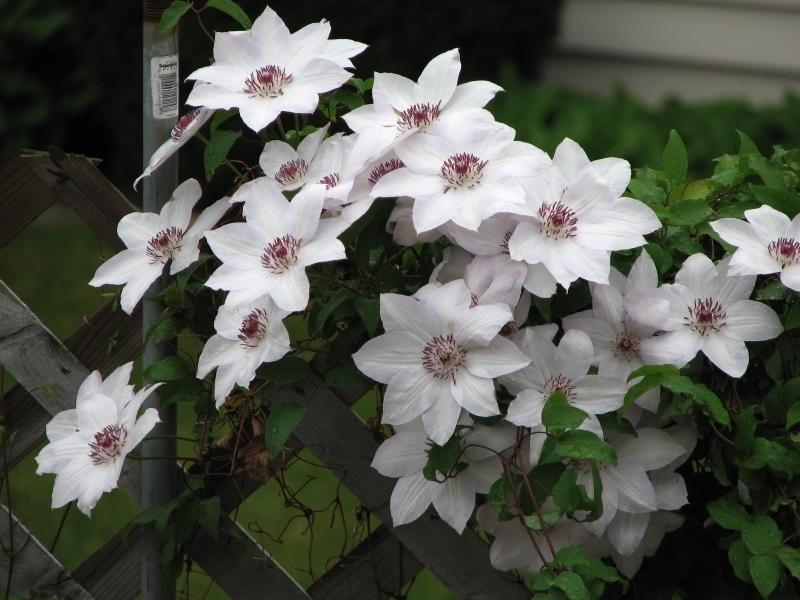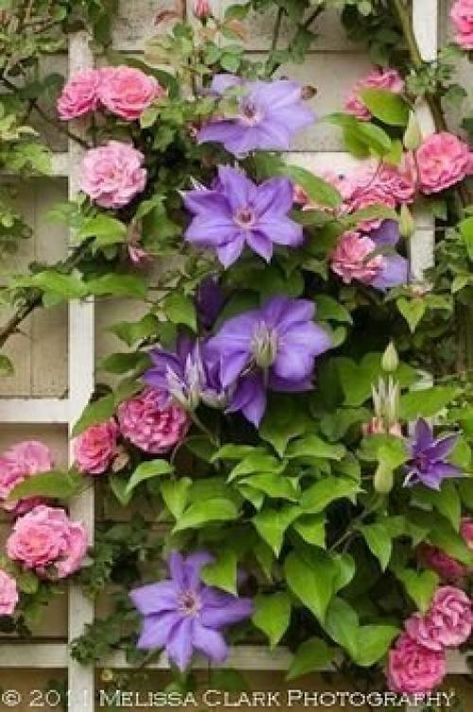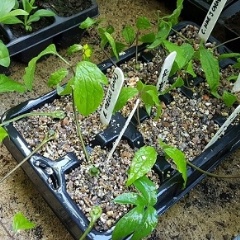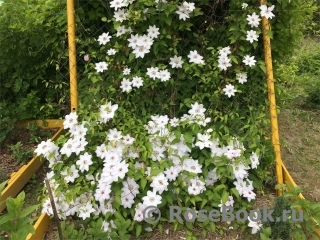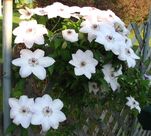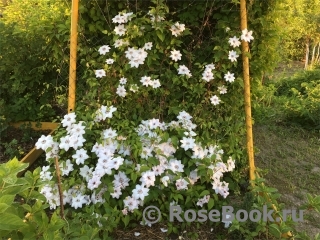Video
You can find out more about this beautiful shrub from the following video:
From early childhood she spent a lot of time working in the garden; knows firsthand how to properly care for most crops. He prefers to devote his free hours to rest outside the city. Dreams of building his own house. I have read many books about caring for garden plants. He willingly shares his knowledge with readers.
Found a bug? Select the text with the mouse and click:
Ctrl
+
Enter
Do you know that:
One of the most convenient methods to prepare a grown crop of vegetables, fruits and berries is freezing. Some people believe that freezing leads to a loss of the nutritional and beneficial properties of plant foods. As a result of the research, scientists have found that there is practically no decrease in nutritional value when frozen.
It is necessary to collect medicinal flowers and inflorescences at the very beginning of the flowering period, when the content of nutrients in them is as high as possible. Flowers are supposed to be picked with hands, breaking off rough pedicels. The collected flowers and herbs are dried, scattered in a thin layer, in a cool room at a natural temperature without access to direct sunlight.
Compost - rotted organic residues of various origins. How to do it? Everything is stacked in a heap, a hole or a large box: kitchen leftovers, tops of garden crops, weeds mown before flowering, thin twigs. All this is interlayered with phosphate rock, sometimes with straw, earth or peat. (Some summer residents add special composting accelerators.) Cover with foil. In the process of overheating, the pile is periodically ted up or pierced for the flow of fresh air. Usually compost “matures” for 2 years, but with modern additives it can be ready in one summer season.
Natural toxins are found in many plants; those that are grown in gardens and orchards are no exception. So, in the seeds of apples, apricots, peaches there is hydrocyanic (hydrocyanic) acid, and in the tops and peel of unripe nightshades (potatoes, eggplants, tomatoes) - solanine. But do not be afraid: their number is too small.
In Australia, scientists have begun experiments to clone several grape varieties from colder regions. Climate warming, which is predicted for the next 50 years, will lead to their disappearance. Australian varieties have excellent characteristics for winemaking and are not susceptible to diseases common in Europe and America.
From varietal tomatoes you can get "your" seeds for sowing next year (if you really like the variety). And it is useless to do it with hybrid ones: the seeds will turn out, but they will carry the hereditary material not of the plant from which they were taken, but of its numerous “ancestors”.
It is believed that some vegetables and fruits (cucumbers, stalk celery, all varieties of cabbage, peppers, apples) have a "negative calorie content", that is, digesting more calories than they contain. In fact, the digestive process uses only 10-20% of the calories from food.
Both humus and compost are rightfully the basis of organic farming. Their presence in the soil significantly increases the yield and improves the taste of vegetables and fruits. They are very similar in properties and appearance, but they should not be confused. Humus - rotted manure or bird droppings. Compost - rotted organic residues of various origins (spoiled food from the kitchen, tops, weeds, thin twigs). Humus is considered a better fertilizer, compost is more readily available.
Humus - rotted manure or bird droppings. It is prepared like this: manure is piled in a heap or pile, sandwiched with sawdust, peat and garden soil. The collar is covered with a film to stabilize the temperature and humidity (this is necessary to increase the activity of microorganisms). The fertilizer "ripens" within 2-5 years - depending on external conditions and the composition of the feedstock. The output is a loose homogeneous mass with a pleasant smell of fresh earth.
Clematis Miss Bateman is an artificially bred variety of a liana-like plant that is part of the large Patens group. This is ideal for decorating the local area. Clematis of this variety is appreciated by gardeners and landscape designers for decorativeness, unpretentious care, high resistance to negative external factors.
Clematis: planting, leaving
Clematis care
includes pruning, attaching to supports, feeding and mulching
, and cold regions also shelter for the winter
... At landing
i post clematis
in places that are only in direct sunlight for a few hours a day: clematis
do not like when their roots are in the sun. I put a mixture of garden compost, rotted manure or droppings, general slow-acting granular fertilizer and leaf humus into the planting hole. When landing a hole and plants
I water abundantly and be sure to mulch the soil. Have clematis
strong and branched root system, therefore, in dry weather, a young plant will have to be watered several times, and adults clematis
with good mulching, watering is not required.

Clematis "Niobe" and "Miss Bateman", group 2. Clematis "Niobe"
- one of the most popular Jacqueman hybrids (Jackmanii)
, bred in Poland. Have varieties "Miss Bateman"
- white flowers with a greenish stripe in the middle and burgundy stamens. This old compact clematis cultivar
bred in the 1860s. Miss Bateman
perfectly complements pink, burgundy and striped clematis
as seen on this Photo
Clematis plant
along fences, around gazebos, next to others ornamental shrubs
, or when landing, you should immediately install support for clematis
("Obelisk", lattice and similar structure). Tie up the stems clematis to the supports
follows evenly in one layer: this provides better illumination and in the future stronger flowering clematis
.


Clematis "Multi Blue" (Multi Blue), group 2. Clematis varieties "Multi Blue"
very popular due to their compactness and large lilac terry flowers
... Seed pods clematis "Multi Blue" "
(like some others) are very decorative in themselves and decorate the garden in autumn
I AM I fertilize clematis
once a year, at the very beginning of the season. I usually scatter around clematis
general slow-acting mineral fertilizer mixed with compost and dry manure. respond well to fertilizer for roses. See Spring processing of roses.


Hybrids of clematis viticella (purple, Viticella), group 3. Clematis "Ville de Lyon"
- an old French variety from 1899 Clematis "Violet Star" (Etoile Violette)
- an old French variety of 1885, is still very popular due to its abundant flowering, amazing color, easy pruning and resistance to clematis diseases.
Clematis Miss Bateman: variety propagation and application in garden design
Not all plant varieties are planted with grains. Each seedling planted is varied. Thus, an increase in the number of clematis seedlings is possible with twigs, separation of the bush and layering.
It is much easier to plant a plant with branches, the branches are cut off. When the buds appear. At the moment, the plant is ripening, getting stronger, but so far the tree bark does not cover the stems.
When choosing branches, the most ideal option will be the middle part of the shoot, there should be buds on the branch.It is necessary to put twigs in a glass of water, you can also immediately put them in the soil, but you must have a greenhouse.
You can also increase the amount of clematis using layering. To do this, a hole is made up to seven centimeters in size, a plant is placed, a hook is attached and everything is covered with soil. At the end of August or in the middle of September, you can already see the first shoots.
Dividing a seedling in half is also good for propagation. The easiest way to divide is a young shrub. Thus, the plant is dug up and cut in two.
This plant is used in different site designs. Clematis can be used to decorate not only verandas, gazebos, a porch near the house, but also a gate in the country. Clematis can hide any faults in buildings. In the neighborhood, you can plant roses with large buds, and it will also look beautiful with lilacs.
Planting a plant and the requirements for it
 It must be remembered that although the plant is not picky, it loves enough light places, so when planting it is necessary to think it over.
It must be remembered that although the plant is not picky, it loves enough light places, so when planting it is necessary to think it over.
As for the soil, it is better to choose a loamy and loose type of soil that will pass water well and will not stagnate for a long time. It should also be noted that it is better not to plant clematis in soil with high acidity. In addition, it should be said that salinity soil is also not a good option. Thus, in preparation for planting clematis, it is worth observing some conditions:
- choose the most illuminated area of the garden;
- choose a soil with low acidity and salinity;
- the plant will grow better on loamy soil or loose soil.
Usually, seedlings are planted in early spring, but you can do this in early September. At this time, the rooting of the bush is more successful.
Since clematis belongs to the group of climbing plants, it is better in advance, even before planting, to take care of the support of the plant, which is very necessary during growth. The support must be at least two meters high. It is not necessary to place the structure too close to the house.
Before planting, you need to check the state of the vine's root system. If its roots are rather dry, then they can be soaked in water for a couple of hours.
Then the soil is prepared. You can make the necessary mixture yourself. For this, peat, sand and humus are mixed in equal parts. You can add about 1 kg of ash to the mixture as fertilizer.
Then a hole is dug, half of which must be covered with the prepared mixture. The rest will be needed in order to fill the roots of the plant up to the root collar. It should be noted that the larger the clematis is, the deeper the deepening needs to be made for planting. This will help protect it from frost.
After planting, the plant must be thoroughly watered and mulched. Peat is suitable for mulching.
What care is needed for clematis miss bateman
 Like all plants, clematis needs proper care for good growth and active flowering. The soil around it must be loosened from time to time, weeds removed, and also watered regularly.
Like all plants, clematis needs proper care for good growth and active flowering. The soil around it must be loosened from time to time, weeds removed, and also watered regularly.
In the first year after the plant has been planted, the soil should not be fertilized. In addition, if at this time the first buds begin to appear, they must be removed so that all the forces of the shrub are directed only to its growth.
Pruning is an important part of plant maintenance. Usually, it is necessary to cut off those branches that for some reason have become dry, as well as damaged branches. Pruning in the fall is very important, because it plays a role in the future appearance of the vine. That is, one of the main types of pruning is sanitary pruning.
Clematis of the miss bateman variety is considered a fairly frost-resistant species and can hibernate without shelter. However, in areas where winters are too harsh, it is still worth sheltering.
To begin with, it is taught and then covered with a covering material.
It is very important that it has good breathability. So, the plant will not rot
An additional layer of dry foliage, sawdust or peat can also be placed on top of the shelter.
If, nevertheless, it seems that clematis has not overwintered the winter, you do not need to dig it up and throw it away right away. Usually, after a while, the old root system starts to release new shoots.
Reproduction of clematis
For breeding clematis with large flowers, it is best to use the vegetative method. It is the simplest and most effective one. Also clematis can be propagated:
- by dividing the shrub - usually such a seedling quickly takes root and begins to grow actively;
- reproduction of layering. In this case, in the spring, it is necessary to separate the side branches and cover them with soil, while fixing them. After a year, the branch takes root and can be cut off from the main bush and transplanted separately.
If it is necessary to propagate clematis on a large scale, then it is better to do it with cuttings. They can be cut off both from the stiff part and from young shoots. It is necessary to take them from the middle part of the branch. The bottom cut is made at a 45 degree angle, and the top cut can be made straight. One cutting should have no more than two nodes. For better rooting, they are planted in greenhouses, because there is an optimal temperature and humidity.
Large-flowered plant cousins
Cultivation of Miss Bateman and other large-flowered clematis can be practiced almost anywhere.
There are several groups of large-flowered clematis:
- 1
Patens (sprawling clematis). It is to this group that Miss Bateman belongs. Often, such plant flowers reach 15 cm and have a variety of colors. These clematis need shelter for the winter. Their flowering period falls in May-June, but re-flowering is possible from mid-summer to autumn. - 2
Zhakman. It is characterized by lush flowering. The shrub has a very powerful root system, and the size of the vines can be up to 4 m. When covering the plant for the winter, it is recommended to cut off all the shoots to the base. The group includes Gypsy Queen, Zhakmani, Luther Burbank and others. - 3
Vicitella. Such clematis are characterized by red-purple tones. The size of the flowers is about 12 cm. The plant blooms until the first frost, because it has good frost resistance. - 4
Lanuginose. Here the shoots are thin, and their length is no more than 2.5 m. As for the flowers, they are more than 17 cm in diameter. In the center of the flower there is a bright stripe, and the color itself is white or blue. - 5
Florida. This clematis is characterized by an excellent aroma and double flowers, the size of which does not exceed 12 cm. - 6
Integrifolia. Such varieties have the appearance of semi-shrubs, whose shoots are about 1.5 m in length, they bloom in June-September and have a variety of colors.

The most favorable for the development of clematis is the middle climatic zone.
Care rules
For abundant, long-lasting flowering, Miss Bateman clematis requires adherence to certain rules of care.
Watering and feeding
Clematis responds positively to the introduction of organic matter (rotted manure, compost), showing an active growth of vegetative mass. It will be useful to introduce into the planting hole and dust the root system, as well as the growth points before planting with wood ash. This is not only a potash fertilizer, but also a means for the prevention of various rot.

Clematis, especially large-flowered and abundantly flowering, need regular and full feeding to maintain high decorativeness. At the beginning of the season, for an active start, the liana requires more nitrogen, and before and at the time of flowering, more phosphorus and potassium. For example, Plantafol 10/30/10 is good to use at the beginning of the growing season. Potassium is especially important for the saturation and expressiveness of colors. Apply Plantafol 5.15.45 and 0.25.50. It is useful to combine root dressing with spraying plants on the leaf.
Pruning
Clematis Miss Bateman II has a pruning group.This is the so-called partial or weak pruning - it consists in the spring shortening of overwintered shoots. Usually 10-15 knots are left from the soil level.
Mulching and loosening
Clematis like to keep their "head" in the sun, and "legs" in the shade. Simply put, they do not like direct sunlight falling on the root zone, drying out and overheating the soil. An excellent option would be to mulch the soil with a thick layer of organic matter in the root zone.

In addition to protecting against weeds, overheating and rapid evaporation of moisture, mulch, as it decays, enriches the soil with useful substances. It will be useful to plant ground cover plants and flowers with a shallow root in the "legs" of clematis. For example, marigolds, in addition to aesthetic pleasure, also benefit clematis, closing the root zone and protecting it from nematodes.
Preparing for the winter period
Pre-winter preparation consists of sanitary pruning, which is carried out in late October, early November. Cut off all dried, diseased leaves and the remnants of flowering. After that, they are treated with copper-containing fungicides, for example, copper sulfate. Then the bush is removed from the trellis or detached from the supports, laid on the ground.
Clematis is not as afraid of frost as dampness and moisture, so you should not try too hard with shelter. It is advisable not to lay the whips on bare ground, but to make a flooring from branches, boards, pine litter or to spread agrofiber. On top of the clematis lashes, they are covered with a breathable material such as agrofibre to avoid damping out. Before hiding under the bushes, poison for mice is scattered.

Landing
Clematis is a long-liver, it can grow in one place for almost 25 years. Therefore, the choice of habitat in compliance with all plant requirements is a very important point. With an incorrect planting, clematis may not bloom for a long time and may not grow overgrown with shoots.
Choosing a place and time for boarding
First of all, let's figure out what is destructive for clematis.
He does not love:
- high standing groundwater - very powerful drainage will have to be done;
- planting in the lowlands - water and cold air stagnate there;
- strong winds - protection will be required from them;
- planting directly under the roof - plants cannot tolerate excessive moisture.
Ideally, fertile loam is best.
Choose a sunny place for clematis. It must be protected from strong winds.
Attention! The Miss Bateman variety is very sensitive to full light - the petals fade in the shade, although some other varieties grow well in partial shade. For plants with a closed root system, planting time does not play a special role - this is the entire growing season
If the root system of the Miss Bateman variety is open, you cannot hesitate with planting in the spring - the vegetation of clematis begins early. Be sure to take into account the temperature of the soil. It should warm up well in the root zone, otherwise the plant will take root for a long time and grow slowly
For plants with a closed root system, planting time does not play a special role - this is the entire growing season. If the root system of the Miss Bateman variety is open, you cannot hesitate with planting in the spring - the growing season of clematis begins early. Be sure to take into account the temperature of the soil. It should warm up well in the root zone, otherwise the plant will take root for a long time and grow slowly.
Advice! You can plant clematis of the Miss Bateman variety in the fall, but taking into account that it takes a month without frost to root it.
Selection of seedlings
Usually grown up two-year-old seedlings and grown from rooted cuttings of one-year old clematis are on sale. The criteria for the approach to the selection of Miss Bateman seedlings with open and closed root systems are different
In container seedlings, attention is paid to the number and strength of the shoots. When buying a clematis seedling of the Miss Bateman variety with an open root system, they look at the condition of the roots - they must be healthy and resilient, their number should be at least 3 and the presence of dormant buds
You can watch the video on how to choose the right seedlings:
Soil requirements
In order for clematis of the Miss Bateman variety to please with its decorativeness, it must be planted in soil that meets all its requirements:
- fertile and high in humus;
- well structured;
- breathable;
- with a slightly alkaline or neutral reaction.
When planting, drainage must be provided.
How is landing
Planting clematis of the Miss Bateman variety has its own characteristics:
- the landing pit should have dimensions - 0.6x0.6x0.6 m;
- the drainage layer is poured about 15 cm high; gravel, crushed stone or fragments of brick can be used as drainage;
- a support is installed before landing;
- the soil for filling the pits is prepared from a mixture of humus, sand and non-sour peat in equal parts with the addition of a liter can of ash and 100 g of complete mineral fertilizer;
- fill half of the pit with the prepared mixture so that a mound forms;
- a plant is placed on its top and the roots are straightened, directing them down;
- cover the rest of the earth, leaving a bowl-shaped depression around the shoots from 8 to 12 cm high;
- pour a bucket of water into the hole;
- mulch the soil around the plant using non-acidic peat.
During the summer, the recess left is gradually filled with fertile soil.
Attention! Clematis is always planted deep down to the first internode. If you are going to plant several plants, the distance between them should not be less than 1.5 m
If several plants are going to be planted, the distance between them should not be less than 1.5 m.
The nuances of planting a flower
For the rapid growth of vegetative mass, good root development and general health, clematis must be properly planted.
Choosing a place and time for boarding
Planting clematis with ACS (open root system) is carried out starting in April, early May, depending on the region. But, in any case, it is advisable to do this before the onset of heat. In autumn, the plant is planted starting in early September. With ZKS (closed root system), clematis can be planted throughout the season.
But varieties with light flowers, such as Ms. Bateman, prefer to grow in a sunny location or lightly shaded in the south. They can be planted near gazebos, fences, walls of houses
But it is important to place clematis so that water does not drain from the roof during rain - this will lead to its death. The landing site must be well protected from the winds

Selection of seedlings
When choosing seedlings with an open root system, an examination is carried out for diseases and rot. The roots should be yellow-brown or orange in color, healthy, firm, more than 10 centimeters long. The cuttings need at least a few root buds. When buying seedlings with a closed root system, they choose those in which the roots already crawl out through the drainage holes and have 2-3 strong young lashes.
Soil requirements
Clematis prefer air and water permeable, light, nutritious soil, with a neutral or slightly acidic pH level. Heavy, clayey soils are categorically unsuitable. They absolutely do not tolerate stagnant water, this will lead to the appearance of root rot and the rapid death of the entire vine.
How is landing
When planting rooted cuttings or seedlings with an open root, a planting hole is dug, 40-50 centimeters deep. A mound of such a height is poured at the bottom so that after planting, the growth point of clematis is deepened by 7-10 centimeters. This is done for the abundant growth of shoots from dormant root buds. The seedling is placed on the top of the mound, the roots are straightened along its sides. When landing, they should not be tangled or kinked.

Then the hole is covered with a substrate, lightly tamped and spilled well with water. It will not be superfluous to mulch the soil immediately after planting.When planting seedlings with a closed root, after removing from the pot, the roots are untangled from below and straightened. The entire earthen lump is placed in the landing hole, it is also deepened to 10 centimeters, covered with earth, compacted and watered with water.
Diseases and pests
Clematis of this variety are distinguished by excellent immunity to various diseases, but due to excess moisture they are affected by fungal infections, such as wilt, gray rot, rust, powdery mildew. Proper care, including moderate watering, weeding, loosening, fertilizing and mulch, and thinning shrub branches, can prevent decay and the appearance of these diseases. Periodic preventive treatments in the form of spraying with fungicides will also not interfere.
Dangerous enemies of clematis are some insects - spider mites, aphid colonies. Acaricidal and insecticidal agents help with these pests. Slugs and snails that fall on the branches are collected by hand. If a nematode, a parasitic worm, has appeared on the vine, it is easier to get rid of the shrub so that this infection does not spread to other garden plants. Clematis is dug up and burned, and the landing site is disinfected.
Planting and leaving
Competent planting ensures the flowering of the culture for 2-3 years, so you need to take this procedure very seriously. Despite the fact that it is possible to plant a plant during the entire warm period, it is recommended to do this in the spring with an established above-zero temperature. It is permissible to carry out the landing in the autumn, but 30 days before the nighttime cold snaps. The landing site must be chosen taking into account the occurrence of groundwater - they should not be located high.
Liana loves the sun, but a little shading will not hurt. What should be avoided is strong winds and drafts, therefore, most often, clematis bushes are planted near tall garden trees that serve as natural protection.
As a seedling, choose ready-made two-year-old bushes and cuttings with roots at the age of 1 year. You can buy plants in pots and containers. In any case, the leaves and stems should be inspected to make sure they are free of any defects.
With an open root system, you should pay attention to the fact that the plant has at least 3 processes and several buds


Landing:
- Having chosen an elevated site for the liana, they dig up the earth, level it, make a hole 50-60 cm deep, the diameter of the ditch should be larger than an earthen coma with roots.
- The bottom of the pit is covered with drainage material - crushed stone, gravel, pieces of brick, to a height of 15 cm.
- At the same time, they put a support with a height of at least 2 m, to which the shrub will be fixed.
- A mixture of peat, sand and humus with the addition of mineral fertilizer and ash (120 g per seat) is suitable for filling the hole.
- The substrate is covered up to half the volume of the hole and, having made a small mound, the prepared plant is placed on it.
- The roots are carefully distributed over the space and clematis is buried, adding layers of earth and tamping them.
- The seedling should be deepened to the first (lower) bud.
- In order not to erode the soil, you need to make a small depression in the near-trunk zone, where 12 liters of water are then poured.
- After absorbing moisture, mulching with low-acid peat should be carried out.
- Over time, the water hole can be filled with garden, fertile soil.


For quick rooting, it makes sense to immerse the clematis root system in warm, settled water for 2-3 hours. If a seedling with open roots is purchased, they are treated with a mash made of clay dissolved in water, which is infused for about 3 days, removing even the smallest solid pieces of rock.
Caring for clematis consists in regular watering, irrigation is carried out once a week so that the soil is moistened 50 cm deep. It is better to use warm, settled water. An adult bush takes from 12 to 25 liters of liquid.If the base of the bush is mulched, then there is no need to loosen and weed the soil. Otherwise, this should be done with each watering.














